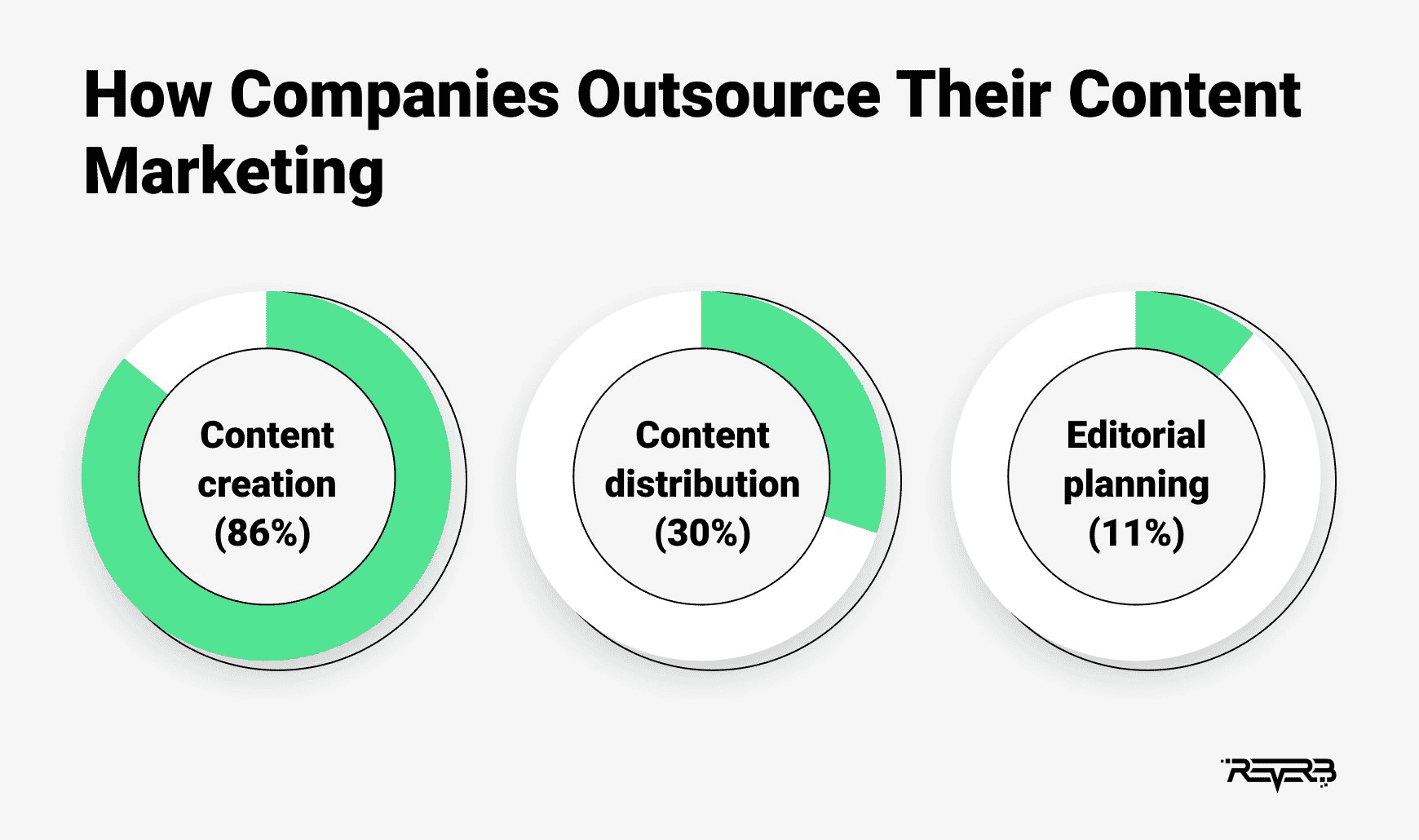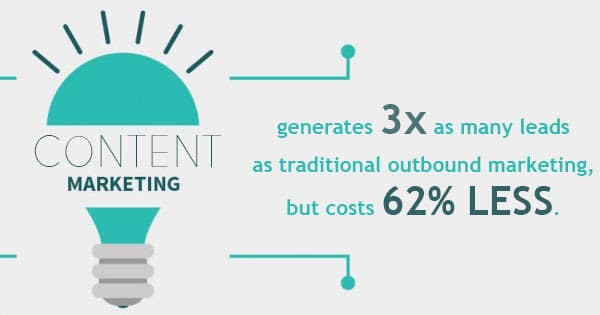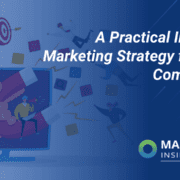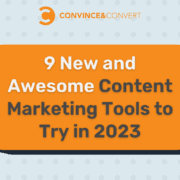4 Types of Content Creation (and How to Decide Which is For You)

Content creation is a core part of every brand’s marketing strategy in 2022 (or at least it should be). But its actual execution can take many forms. There are several types of content creation, and brands definitely don’t have to go it alone when it comes to developing content to engage their audiences and attract new customers.
In fact, the overwhelming majority — 86% — of businesses currently outsource their content creation in some way.

Image Source: Reverb
But that doesn’t mean in-house content creation is dead (far from it) or that outsourcing has to be an all-or-nothing approach. In the sections that follow, we’ll walk through what content creation entails, why it’s so critical for brands today, the various approaches for executing it on an ongoing basis, and how to know which approach is right for your business.
Quick Takeaways
- Content marketing earns more leads and conversions than traditional marketing methods at a fraction of the cost.
- In-house content creation gives you total control but comes with heavy ongoing expenses.
- Content agencies offer comprehensive content services (including content creation).
- Freelancer outsourcing is a flexible option but requires close management.
- Many companies employ a combination of the three types of content creation to meet their unique needs.
- To determine the best approach for your business, you need to evaluate factors like the maturity of your current strategy, makeup of your internal team, and current content marketing budget.
What is content creation and why should you be doing it?
Content creation is the development of high-value assets that power your content marketing strategy and other lead generation and sales efforts. It encompasses many types of content, including but not limited to:
- Blog articles
- Videos
- Ebooks/whitepapers
- Emails
- Social media posts
- Infographics
- Guides/checklists
Every company needs to be creating content. Today, both B2B and B2C buyers are doing the majority of their brand discovery and research online. Content is what represents your brand and builds an initial connection with potential customers during this time.
When created with SEO in mind, content is also what captures the attention of Google’s web crawlers and gets your website ranked on Google SERPs, significantly increasing your company’s online visibility and brand awareness.
Content marketing has now far and away proven to be the most effective marketing method for brands. It earns 3X the leads and 6X the conversions at a fraction of the cost compared to other types of traditional marketing.

Image Source: Sectorlink
By 2022, almost all brands know the importance of incorporating content creation and content marketing into their strategies. Executing it, however, is a bit more complicated.
For starters, content creation is time consuming. Writing a single blog article takes 3-4 hours, and the best performing companies publish 16+ articles per month. That’s more than 60 hours of content creation related to blogging alone.
Content creation also requires a wide range of skill sets. SEO expertise is needed to get content ranking on Google SERPs. Certain types of assets require graphic design skills or even video production experience. The writing itself also requires specialized experience depending on the type of content asset being created. And in many cases, the people with the most knowledge (like C-level execs or technical experts) are usually not the best people to do the actual writing.
Companies take varied approaches to getting content created at the frequency, volume, and quality needed to execute an effective content marketing strategy. Some handle it totally in-house while others outsource completely. In many cases, companies use a hybrid approach for more flexibility.
In the next section, we’ll explore the 4 main types of content creation methods.
4 Types of Content Creation
In-house
In-house content creation means all content is created by your own internal marketing team. The obvious advantage to this approach is that you have total control of and visibility into the content creation process. The writers, designers, and marketing strategists working on your content are all intimately familiar with your brand. In-house content creation can also save you money in that it doesn’t require paying external contributors.
But it also comes with some potential pitfalls. If you don’t have the right expertise on your internal team, you risk spending a lot of time, effort, and resources on content that doesn’t earn the ROI you expect.
Hiring and maintaining an in-house team can also get expensive. Full-time employees come with salary, benefits, and equipment expenses. If you don’t already have a team in place to create content, building one will likely be more expensive than outsourcing to an agency or freelance writers, which we’ll cover in the next sections.
Agency outsourcing
Hiring a content marketing agency is the most comprehensive approach to outsourcing and is a great option for businesses that recognize the importance of content creation but don’t have the resources to do it in-house. Content marketing agencies typically offer a managed services model that means they handle content creation as well as things like SEO strategy, site audits, competitive research, and performance reporting (these are just a few examples).
The perceived drawback of working with a content marketing agency is that it’s expensive. And it is true, outsourcing to an agency comes with a significant expense.
But it’s important to look at agency outsourcing with a 360 degree view. In short, you get out of your content strategy what you’re willing to put in. If you don’t have the resources to effectively execute content creation and strategy in-house, you’ll earn higher ROI by investing in an agency to help you do it.
Freelancer outsourcing
Another way to outsource is to hire freelancers to execute projects for you. Today, platforms like Upwork and Fiverr make it easier than ever to find and hire freelancers with the right skills and experience for your projects. You can hire writers, designers, editors, video producers and more with flexible terms and rates.
If you have the right team to set and manage your content strategy but need support on execution, freelancing might be the approach for you. That said, it’s important to consider the management requirements that come along with hiring freelancers. It requires active management to help freelancers achieve the right voice, tone, or design aesthetic for your brand (not to mention keeping everyone on deadline).
If you’re going to hire freelancers to help execute content creation and strategy, make sure you have someone (or multiple someones) dedicated to keeping things running smoothly.
Hybrid
Last but not least is a hybrid approach to content creation. This method is just how it sounds: it combines in-house content creation, agency outsourcing, and freelancer outsourcing depending on the business’s current needs.
For example, perhaps blogs are written and published in-house, but ebooks, infographics and other designed assets are handled by an agency. Maybe you hire an agency to help you develop and outline your strategy, then hire freelance writers to handle the actual content creation.
The takeaway is that businesses use hybrid approaches to remain flexible and meet changing needs related to content. The drawback to this method is that it can get a bit messy and hard to manage. It’s also more difficult to track performance metrics and determine content ROI when there are so many separate moving parts.
Which types of content creation are right for you?
There are clear advantages and potential drawbacks to each of the types of content creation. There is no one-size-fits-all approach, and the biggest determiner of success is typically how well the approach aligns with the resources and needs of the company.
So how do you know which one is best for your business? There are a few key factors to consider:
- Internal resources – What is the current makeup of your content team? What is the reasonable bandwidth for content creation? Do they have the right knowledge and experience to create content that will perform?
- Content marketing maturity – Do you already have a content strategy in place? If so, is it working? Do you need support with strategy development or strictly content creation?
- Strategy – What types of content are included in your current content strategy (i.e. do you mainly publish blogs and social content? Do you create a high volume of downloadable assets like ebooks? Do you plan to publish video content? etc.)
- Budget – What is your budget for spending on content creation?
When you know where you stand with your current strategy, your future plans and needs, and your spending ability, you’re best able to pursue the type of content creation that will earn you the most ROI.
Over to You
Ready to level up your approach to new content creation? The team of writers and SEO experts at Marketing Insider Group can deliver you optimized, ready-to-publish content every week for one year (or more).
Check out our SEO Blog Writing Service or schedule a quick consultation to learn more!
The post 4 Types of Content Creation (and How to Decide Which is For You) appeared first on Marketing Insider Group.
Did you miss our previous article…
https://www.sydneysocialmediaservices.com/?p=1810












